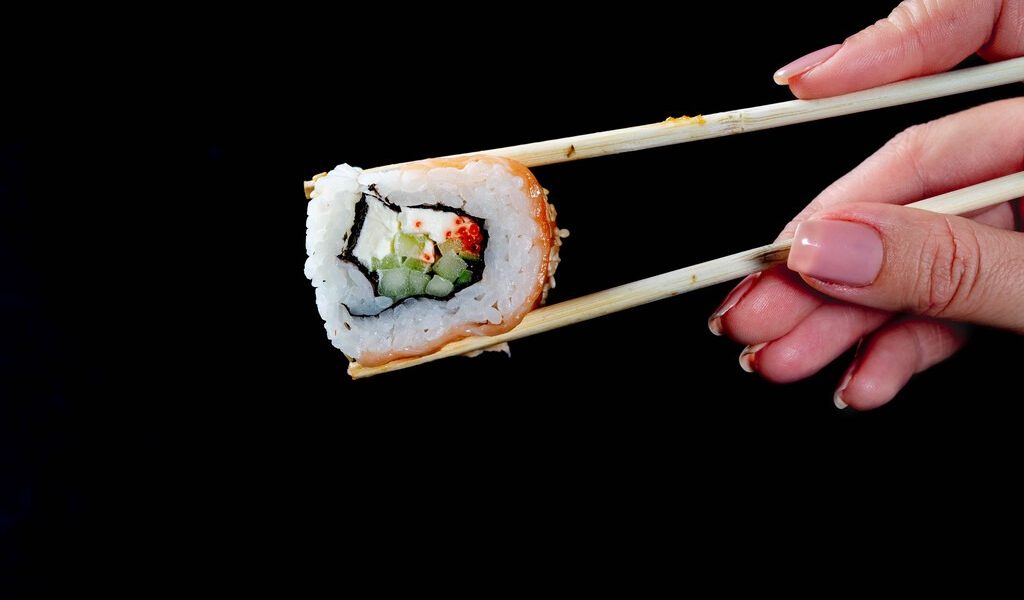Sushi is to Japan what a croissant is to France. Both types of food have become somewhat of a symbol of the nation’s promise to deliver an unimaginable food experience. Whilst you’ve probably eaten these types of food multiple times, there is something rather exciting about finally being able to experience it at its origin.
In most countries around the world, adaptation of traditional sushi has meant that types such as California rolls, prawn tempura rolls, and tuna mayo rolls are amongst the most popular.
However, in true Japanese fashion, most traditional sushi rolls are modest in filling and don’t contain many fried options.
If getting the full traditional sushi experience is on your list, then we recommend you run through this list. Familiarise yourself with these 12 most traditional Japanese sushi rolls and let us know which one you prefer!
Before to read our list, if you want to make sushi rolls at home, get our Sushi Making Kit and enjoy preparing and eating yummy sushi rolls at home with your friends and family!
You can also check more Japanese cookware here.
1. Tuna Roll (Tekka Maki)
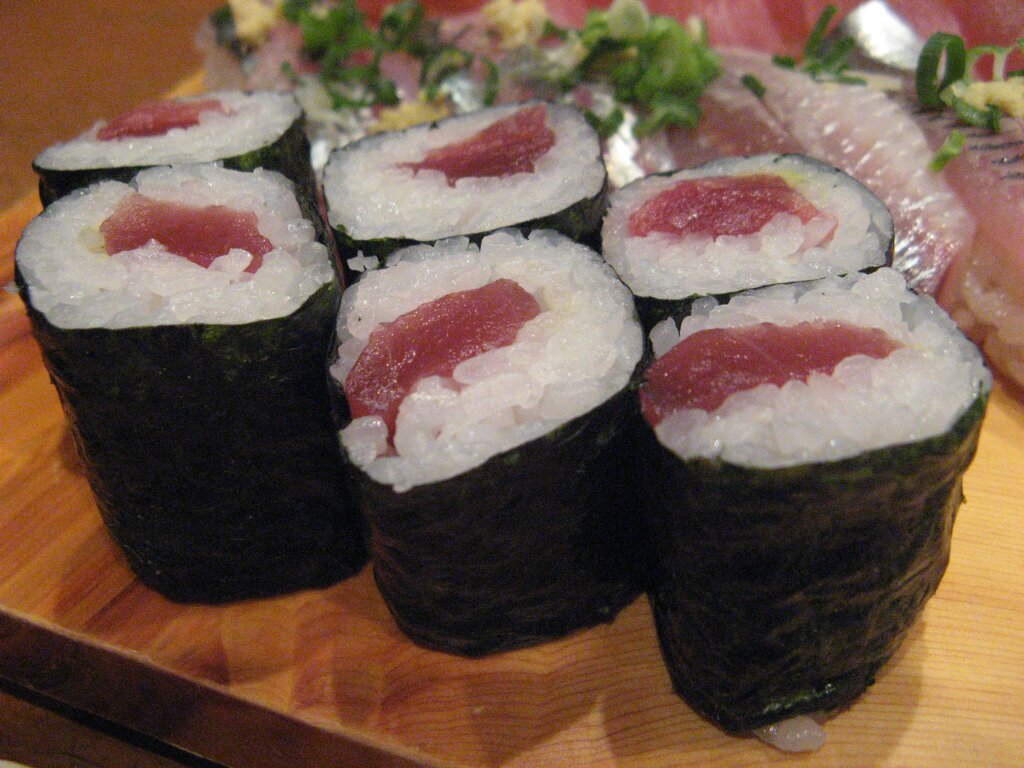
Tuna rolls are probably one of the most common and most popular types of sushi rolls you can get around the world. However, whereas you would probably be more used to cooked tuna mixed with mayonnaise with a side of cucumber, the traditional tekka maki roll has only one filling: raw tuna.
Raw tuna is enjoyed in Japan as a common delicacy due to its soft flesh and easy availability. Around the world, it might be a pricier menu item, but in Japan you will find it readily available at most sushi stores.
It’s a simple sushi roll with only raw tuna encased in sushi rice, rolled within one sheet of nori.
2. Cucumber Roll (Kappa Maki)
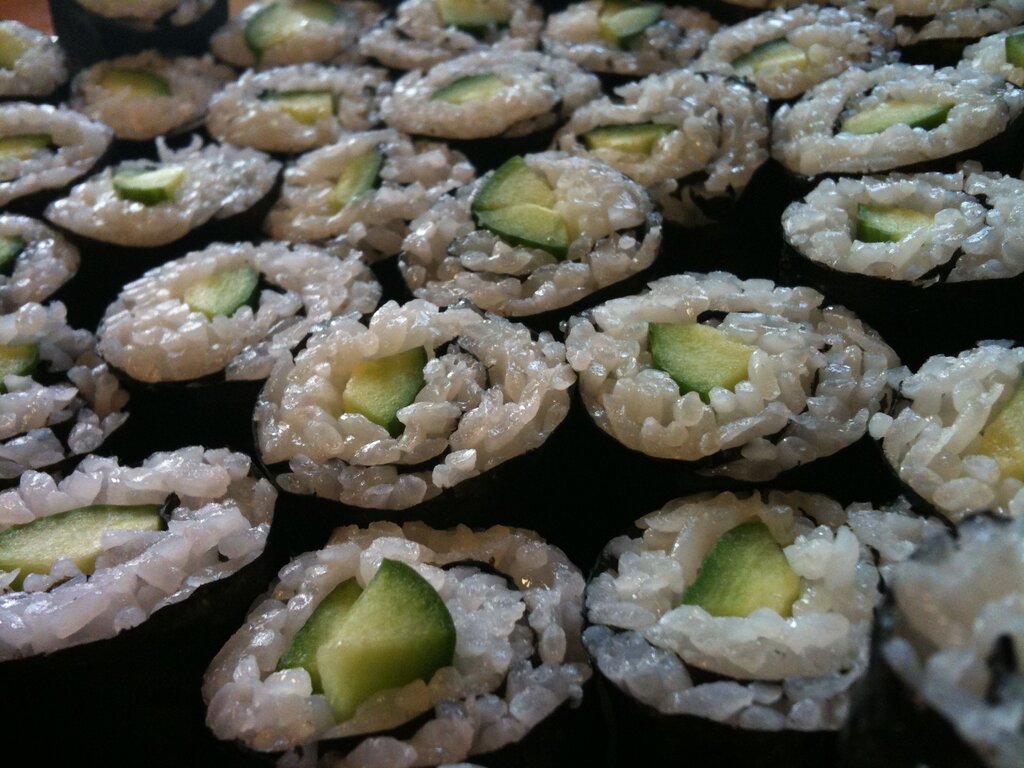
This simple, delicious and fresh sushi roll is similar to the above, with only thin strips of cucumber as its filling. It is a popular item for vegetarians, children, and those trying sushi for the first time due to its relatively basic ingredients and easily enjoyable taste.
Sushi restaurants around the world like to pair cucumber up with another type of protein, but in Japan, they keep it super simple!
3. Soybean Roll (Natto Maki)

If you’re an adventurous soul, we recommend seeking out your nearest sushi restaurant and giving natto maki a try.
This traditional Japanese sushi roll’s main ingredient is natto, or fermented soybean. Natto beans are light brown in colour and sticky and slimy in nature. The most prominent feature of natto would be its smell – it is quite pungent!
Natto maki is made of a small portion of natto beans wrapped within sushi rice and nori. It’s one of the most traditional types of Japanese sushi rolls so if you want the true Japanese sushi experience, give it a shot!
4. Pickled Daikon Roll (Oshinko Maki)
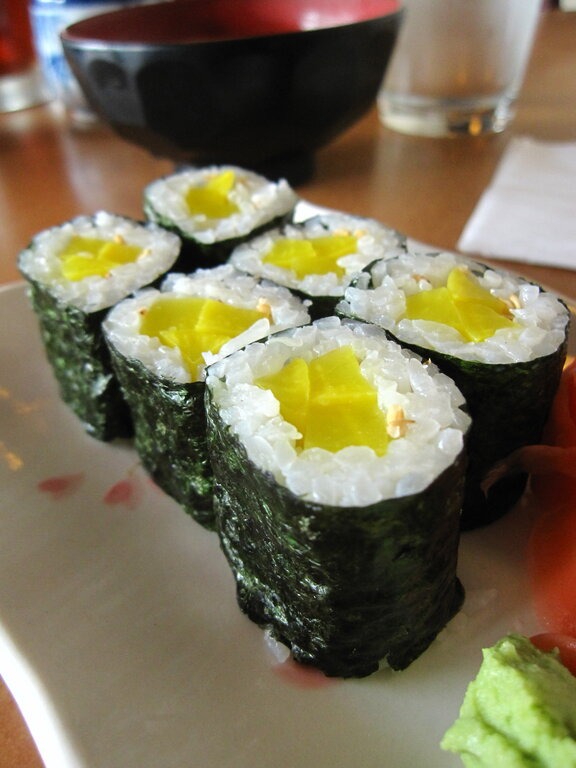
For those who enjoy the sourness of pickled food, the shiko maki roll would be quite the treat!
The main ingredient in this sushi roll is pickled daikon, which is a type of white radish that has been pickled with salt. Once it’s ready, it becomes a bright yellow colour and has a soft crunch to it.
Not to sound biased here, but the sweet and sourness of the pickled daikon mixed with the sushi rice and roasted nori sheet is not like anything else in the world. This one is a must try!
5. Eel Roll (Unagi Maki) – One Of My Favorite Traditional Japanese Sushi Roll!

Eel sushi rolls are a common delicacy in Japan and are definitely up there as one of the most popular traditional sushi rolls. Both types of eels can be used in sushi (saltwater and freshwater). Sometimes the eel is paired with a fresh slice of cucumber, making it a unakyu or anakyu roll instead.
Whilst eel can be enjoyed fresh, in sushi it is usually marinated in a sweet soy glaze before being cooked and rolled up. It offers a more rich and earthy taste than salmon and is incredibly soft to bite into.
Read More: 14 Must-Try Omakase Sushi Restaurants In Tokyo
6. Dried Gourd Roll (Kanpyo Maki)
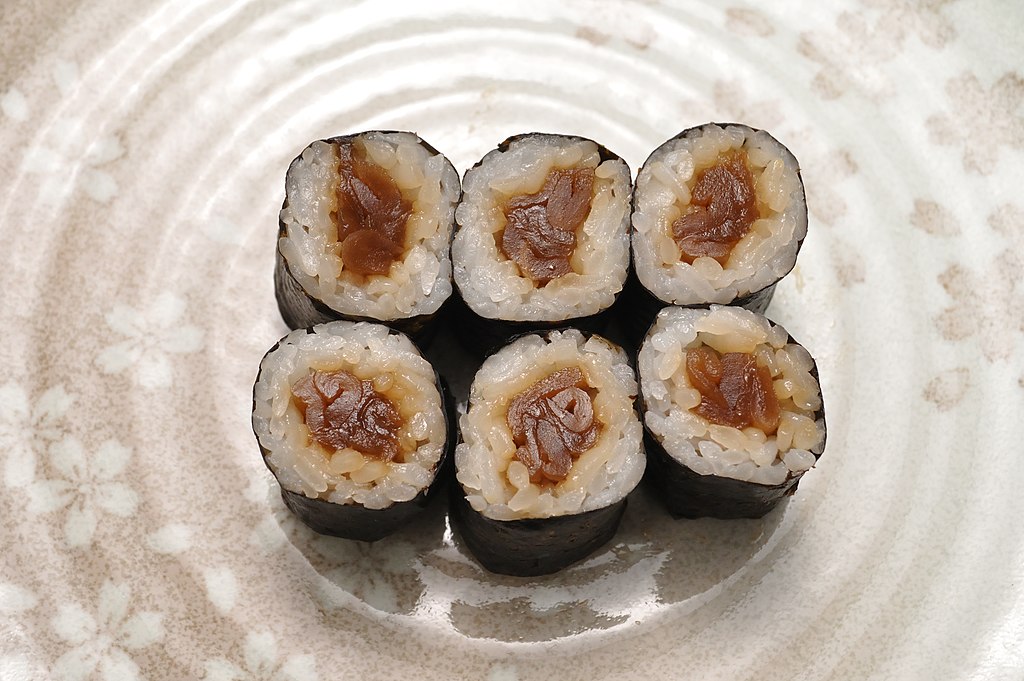
Similar to natto, dried gourd is a traditional Japanese ingredient that you would normally only find in Japanese sushi restaurants.
Essentially a calabash fruit (a type of gourd) is dried out and stripped into pieces. To prepare it for sushi, it is then rehydrated and seasoned with soy sauce, sugar, and rice wine. Once it has been prepared, it is then rolled up into a sushi roll and served in small pieces.
Read More: 10 Things NOT To Do When Eating Sushi In Japan
7. Pickled Plum and Cucumber Roll (Umekyu)
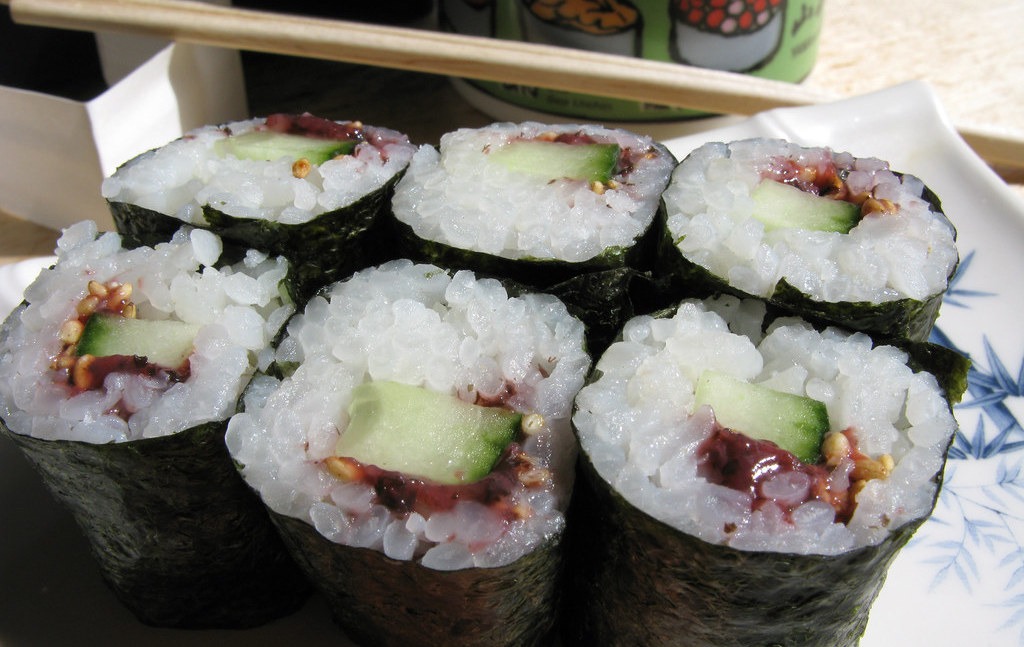
For a sushi roll experience you’ll likely only find in Japan, you must try the umekyu roll! It consists of pickled plum, or umeboshi in Japanese, and fresh cucumber.
The pickled plum gives off a sweet taste whilst the crunch and juices of the cucumber adds a fresh element to the roll. This one is a favourite amongst vegetarians and vegans.
You May Also Like: Umeboshi Health Benefits
8. Tuna and Scallion Roll (Negitoro Maki)

The negitoro maki is a classic at most Japanese sushi restaurants. It combines the juicy meat off the skin and bones of a tuna belly with the fresh and strong flavour of chopped spring onions. Sesame seeds are often mixed in to round off the taste.
This is a delicacy found only in Japan. When trying this dish, remember to eat it alongside the pickled ginger, wasabi and soy sauce for the full negitoro maki experience.
9. Yellowtail and Scallion Roll (Negihama Maki)

Similar to the negitoro maki above, negihama maki consists of tender diced yellowtail sashimi mixed with green onion.
Yellowtail sashimi has a high fat content and tender texture, making it a favourite amongst sushi-lovers. It’s best eaten with pickled ginger, wasabi, and soy sauce.
You May Also Like: Best Japanese Rice Cookers
10. Futomaki
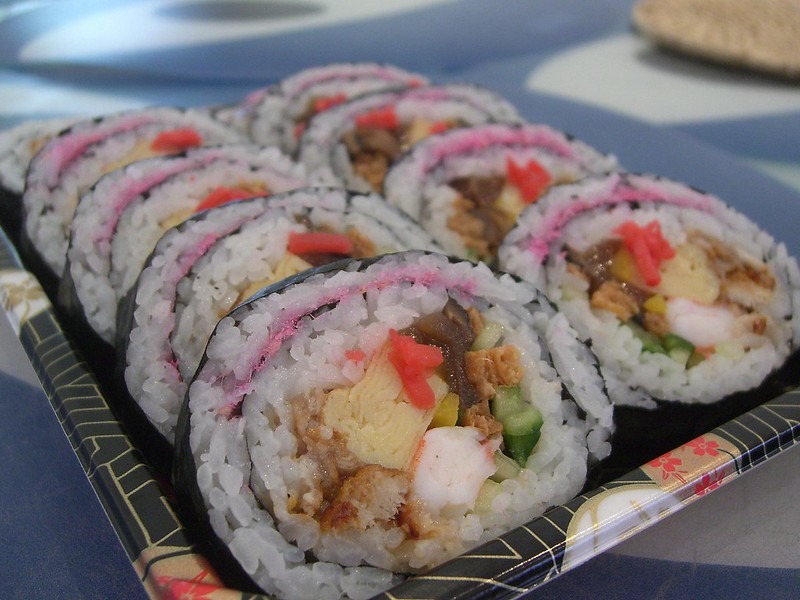
Futomaki is like a normal maki roll but bigger.
When we say bigger, what we mean is fatter, with more rice and lots more types and quantities of filling. It can be eaten throughout the year at many sushi restaurants, however the most popular type of traditional futomaki roll would be the one eaten during Setsubun.
Setsubun is a day celebrated in Japan to welcome the springtime. It is usually during early February. During Setsubun, futomaki rolls are shared generously and joyously amongst prayers for a good year ahead.
Common fillings inside futomaki include cooked spinach, egg omelette, daikon radish, fish, cucumber, Japanese mushrooms, dried gourd, and pickled plum.
11. Temaki

Temaki rolls are essentially sushi rolls that are rolled into a cone making them easy to hold, hence the name temaki which means ‘hand rolls’.
They’re a fun way to eat sushi as it replicates the method of eating an ice cream! There’s usually less rice, with the fillings being cut and prepared lengthwise so that they can stretch across the entire cylinder.
Common filling types include cucumbers, salmon, avocado, and fresh prawns. In western countries, prawn tempura is quite a popular option.
Read More: The 12 Best Sushi Making Classes In Tokyo
12. Kakinoha-zushi

Kakinoha-zushi is a very traditional Japanese sushi roll that is quite rare to see outside of Japan. It originates from Nara and actually dates back all the way to the Edo period!
Kakinoha-zushi is made up of sushi rice pressed into a square shape and is generally topped with seafood filling such as salmon, mackerel, prawn or eel. It is then wrapped into persimmon leaves.
During the Edo period, the method of wrapping it inside persimmon leaves allowed it to be transported whilst keeping the food from going off.
If you’re visiting Nara, be sure to check the department stores and train station souvenir stores for it!
—
Traditional Japanese sushi rolls really do stand out from the crowd! Whether or not you’re a sushi lover (let’s be real though…who isn’t!), eating sushi made by Japanese sushi chefs is an unreal experience.
From their years of learning how to methodically prepare the sushi to the freshness of the ingredients used, it won’t be like eating sushi back at home. Who knows, maybe one of the traditional Japanese sushi rolls you try might turn out to be your favourite!
If you want to discover more yummy Japanese food, make sure you also read these blog posts: Best Japanese Dishes, Japanese Street Food and Japanese Tea Ceremony. And if you want to prepare sushi rolls by yourself, have a look at our selection of the best Japanese knives.

